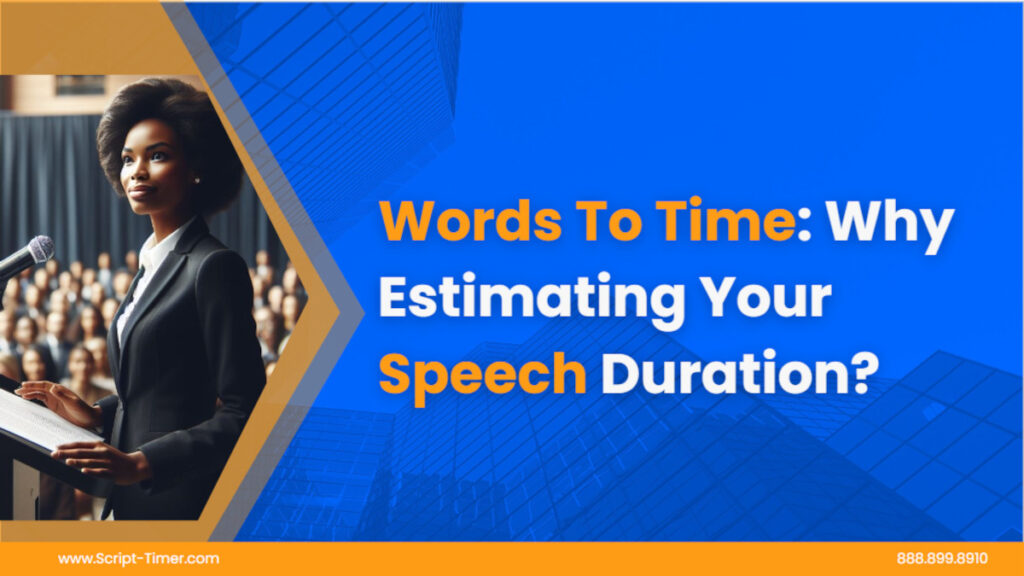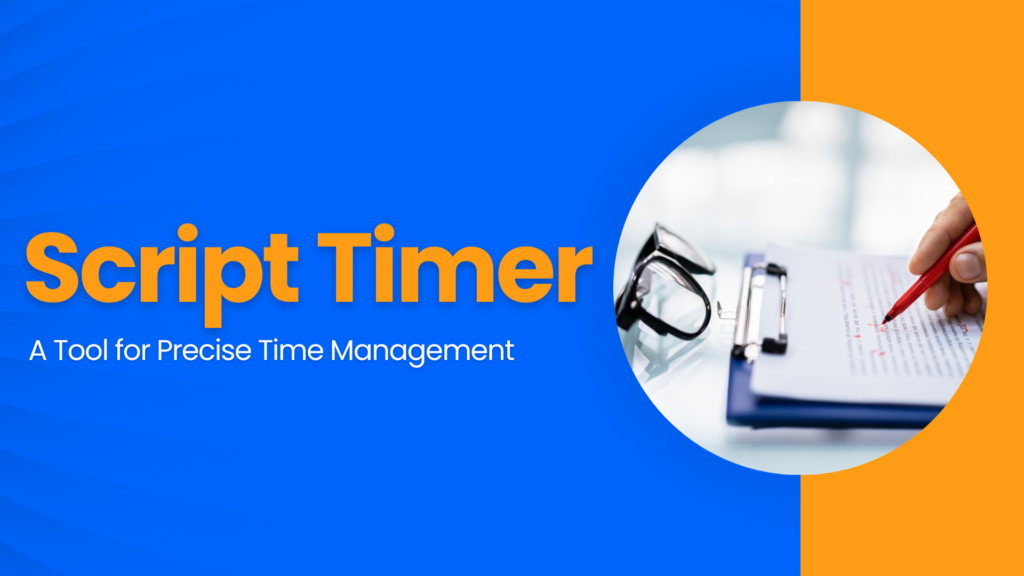There are many scenarios where words to time tools are useful, for example: Have you ever meticulously created a script for a speech or presentation and then realized that you’ve drastically underestimated (or overestimated) your speaking time? This is a common problem when we are writing a script, especially for people who are new to public speaking, but don’t worry!
By understanding the relationship between words and time, you can transform your speeches into great presentations that engage audiences.
In this blog, we’ll see why is it important to estimate speeches’ duration, online tools to ensure staying in the desired time frame, and some tips to make this process more effective.
The Power of The Pace
The key to converting words to time is understanding all the involved factors that affect the duration of a speech. One of these factors is speaking speed, many people believe reading speed and speaking speed are equal, but that’s far from reality, the average adult reading speed falls between 150-200 words per minute, while speaking is slightly slower at 130-160 words per minute, so estimating your speech duration based on your reading speed is a huge mistake, and your speaking speed varies depending on factors like:
- Complexity of Text: Delivering a speech that uses a lot of technical language will be more difficult to deliver, so it will take more time than delivering a speech that is designed to use more easy words.
- Delivery Style: Different types of speeches require different styles of delivery, for example, conversational speeches allow a faster pace, while more formal presentations require a more measured approach.
- Audience Engagement: Engagement techniques like pausing for emphasis, storytelling, or Q&A all impact your speaking speed, and you also need to be prepared for unexpected factors like last-minute adjustments in your script, unexpected questions from your audience, etc, because those factors will also impact your speech’s duration.
Tools And Techniques For A More Accurate Estimation
Now that we better understand the role of pace when delivering a speech, let’s see some practical methods to estimate your speech duration:
- The Basic Formula: If you know exactly what’s your average word per minute you can estimate how long your speech will take to be fully delivered by dividing the total word count of your speech by your average word per minute. For example, if your speech is 500 words long, and your average speaking speed is 150 words per minute, the estimated duration would be 3.33 minutes, because (500 Words)/(150 WPM) = 3.33 minutes.
- Online Calculators: There are many online options to estimate your speech duration easily and in a matter of seconds, just paste your script in our script timer and you’ll automatically know how long your speech will take, it’s easy, effective, and we use the latest technology to estimate speeches’ duration in the most accurately.
- The Rehearsal Test: Try to practice your speech out loud and time yourself, repeat this many times to not only find your speech duration but also to practice your delivery and give a better presentation.
- Feedback: When you practice your speech out loud, try to have a friend listen to your delivery, so they can tell you what to improve and the parts where you should adjust your pace.
Additional Tip: When rehearsing, take into consideration all the possible factors that can affect your speech duration like introductions, greetings, and audience interaction. This will provide you with a more accurate picture of your total presentation time.
Beyond The Numbers: The Importance of Content
While knowing what will be your speech’s total duration is really important, you also need to remember that compelling content is what really dictates your speech duration, so here are some tips to improve your speech for optimal time management:
- Focus On Your Key Points: Identify what are the main messages you want to cover in your presentation and prioritize them to ensure you’re sharing valuable information throughout all the duration of your speech.
- Don’t Stop Editing: Don’t fall in love with your first draft, because there are always points to improve, so eliminate redundancies, unnecessary sentences that don’t carry a good point, and information that doesn’t directly support your main themes.
- Create Clear Transitions: Make sure your speech has smooth transitions between ideas to ensure you maintain the audience’s focus and prevent rambling.
Mastering The Art Of Public Speaking
Transforming words into an engaging and time-conscious presentation requires a lot of practice and meticulous planning, so let’s see some concluding tips to effectively transform our words to time and ensure a successful speech:
- Be Flexible: Make sure all your talking points are concise and informative, so you can expand on those points if time allows, or also to scale back if it’s necessary.
- Visual Aids: Use slides, images, or any type of visual material to ensure your audience’s attention.
- Confidence is Key: Even the best estimates can deviate due to unexpected situations, when this happens project confidence in your delivery, so you can adapt as needed.
By effectively turning your words to time, you will not only ensure staying in the desired time frame and deliver impactful presentations, but you will also project more professionalism and respect for your audience’s valuable time. So, the next time you craft a speech, remember that it is not only about the words but how effectively you translate them into an engaging and time conscious-speech. And if you want to take your speech to the next level, try all the free speech tools Script Timer has for you, just sign up and you’ll unlock all the tools you need to improve your speech.





